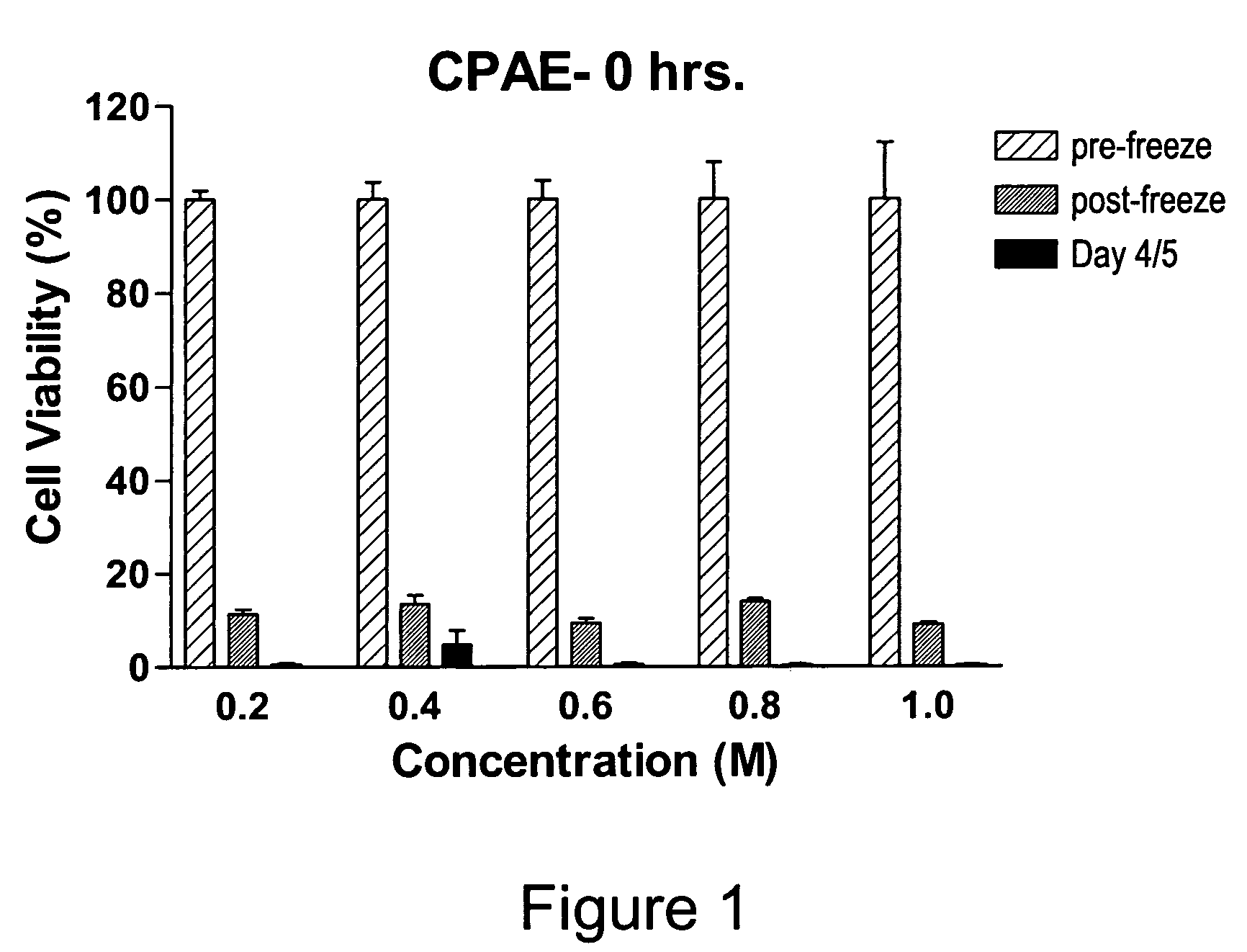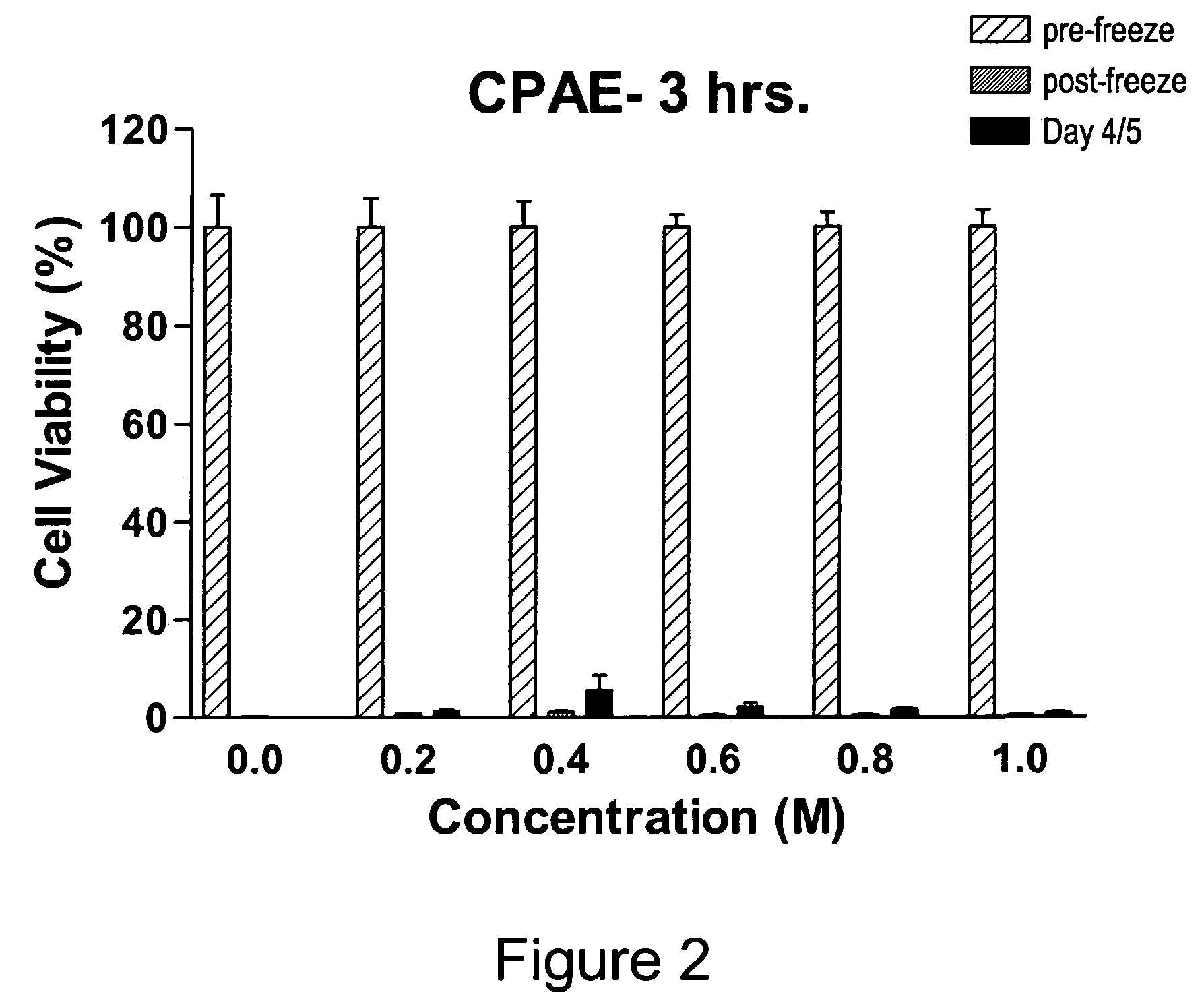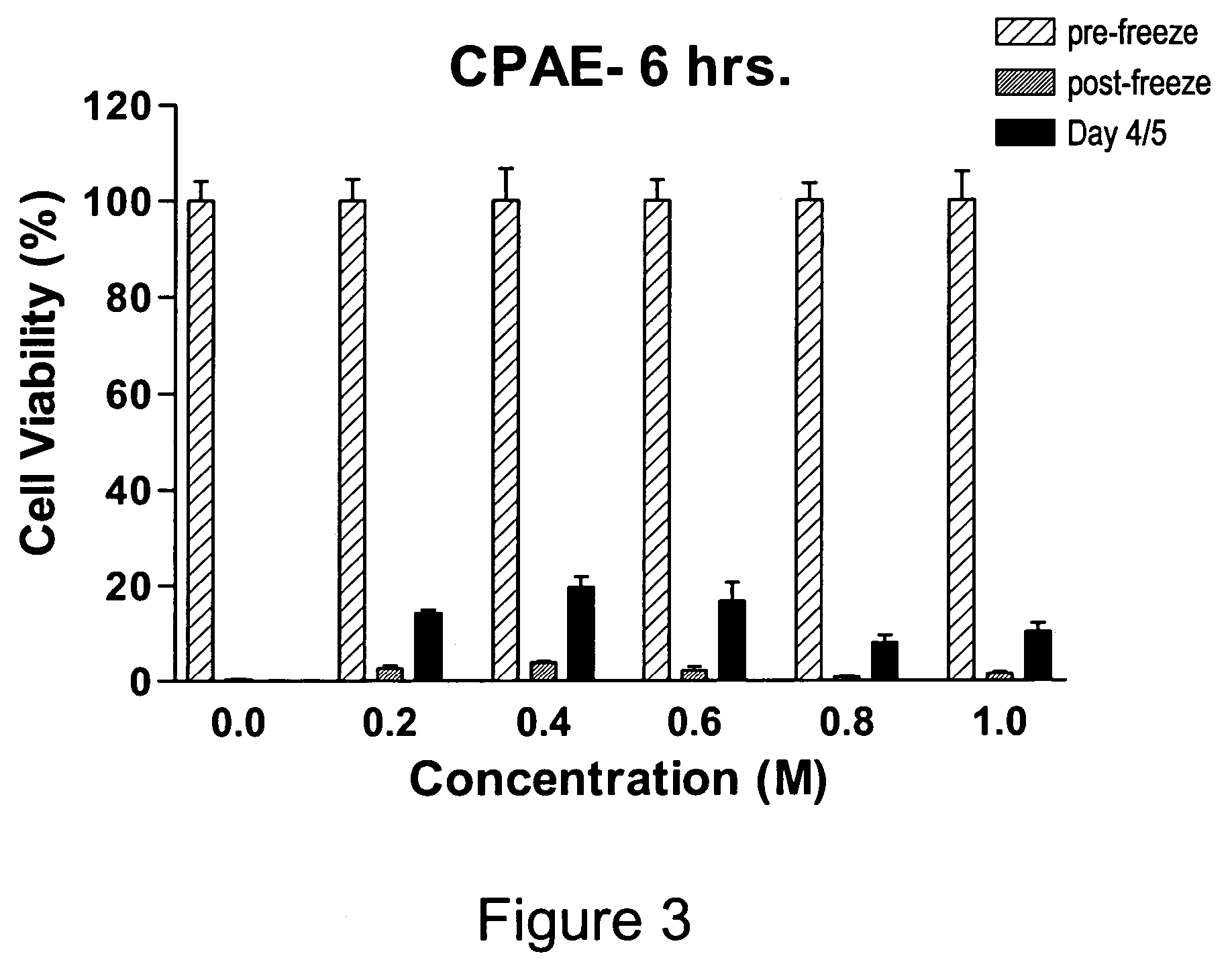Method for treatment of cellular materials with sugars prior to preservation
a technology of cellular materials and sugars, applied in the field of cell, tissue and organ preservation, can solve the problems of few, if any, cells surviving preservation procedures, minimal, if any, cell survival, etc., and achieve the effect of increasing cell survival
- Summary
- Abstract
- Description
- Claims
- Application Information
AI Technical Summary
Benefits of technology
Problems solved by technology
Method used
Image
Examples
examples
[0035]A bovine pulmonary artery endothelial cell line, CPAE, is used for these experiments. Cells are plated the night before in 96-well microtiter plates at 20,000 cells / well, then exposed to 0.2M trehalose in Dulbecco's Modified Eagle's Medium (DMEM) at 37° C. for 0, 3, 6, 12, 18, 24, 48 and 72 hours.
[0036]Following exposure and prior to freezing, cell viability is determined using the non-invasive metabolic indicator alamarBlue (Trek Diagnostics). Thus, after exposure to DMEM containing trehalose for the above-identified time periods, a volume of 20 μl of alamarBlue is added to cells in 200 μl of DMEM (10% FCS) and the plate is allowed to incubate at 37° C. for an additional three hours. The plate is read using a fluorescent microplate reader (Molecular Dynamics) at an excitation wavelength of 544 nm and an emission wavelength of 590 nm. The alamarBlue assay is chosen because it is non-toxic and can be used to assess the viability of the cells without damage. Thus, cell viability...
PUM
| Property | Measurement | Unit |
|---|---|---|
| time | aaaaa | aaaaa |
| period of time | aaaaa | aaaaa |
| volume | aaaaa | aaaaa |
Abstract
Description
Claims
Application Information
 Login to View More
Login to View More - R&D
- Intellectual Property
- Life Sciences
- Materials
- Tech Scout
- Unparalleled Data Quality
- Higher Quality Content
- 60% Fewer Hallucinations
Browse by: Latest US Patents, China's latest patents, Technical Efficacy Thesaurus, Application Domain, Technology Topic, Popular Technical Reports.
© 2025 PatSnap. All rights reserved.Legal|Privacy policy|Modern Slavery Act Transparency Statement|Sitemap|About US| Contact US: help@patsnap.com



